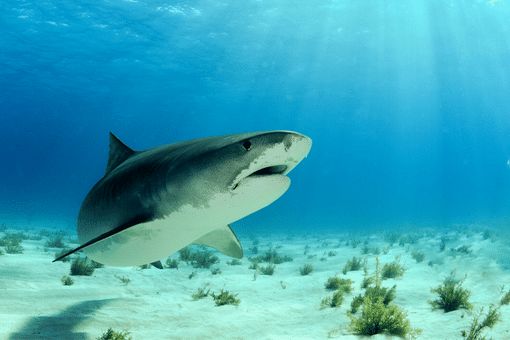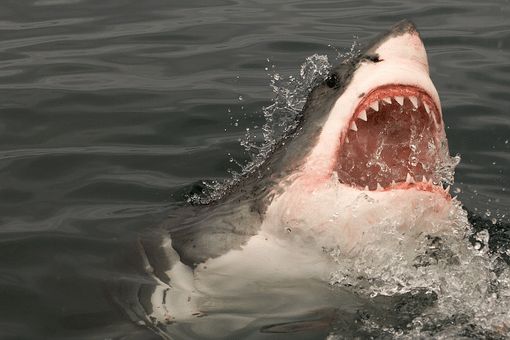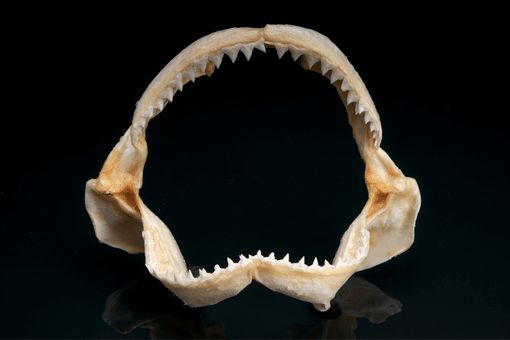Sharks are one of the most popular sea creatures, particularly for their reputation for size and ferocity. Sharks are predators that typically eat fish, squid, and other marine animals. Some sharks are also known to eat humans.

But how much do you know about these incredible beasts? Do sharks have bones? The answer to this question will surprise you.
Here is a look into the shark’s body structure.
How Many Bones Do Sharks Have?
Most people believe sharks have bones, but they have zero bones. From the gigantic whale shark to the pencil-sized lantern shark, sharks do not have a single bone structure in their vertebra.
However, sharks have cartilage skeletons, unlike other boneless sea creatures like jellyfish. Their skeletons have cartilage instead of bone to aid easier navigation when hunting down their prey.
The cartilaginous skeleton extends from their skulls, through the backbone, to the tail fin. Sharks gradually accumulate calcium salts in their cartilaginous skeleton to make it sturdier as they age. This also allows the shark to fossilize their skeletal systems just like other boned vertebrates.
How Are Sharks Vertebrates?
Although sharks have no bones, they are still classified as vertebrates. Why is this so?
An animal should have a skeletal system to be categorized as a vertebrate. Sharks have a skeletal system made of cartilage that helps them maintain a sturdy yet agile body.
The shark’s cartilaginous skeleton builds the shark’s body structure and has varying thickness and density in different parts. For instance, a shark’s teeth are calcified and tougher than its dorsal fins. Since the backbone and teeth are calcified, Sharks also compensate for the lost bone strength by having thicker skin.
Did Ancient Sharks Have Bones?
Sharks have been in our oceans for a very long time. The oldest ancestors to the magnificent creatures we see today are estimated to have existed 455 million years ago. While it’s impossible to tell whether there were shark species that had bones, we know that ancient sharks likely had the same cartilaginous skeletons.
Only shark teeth, spinal cord, vertebral centra (dorsal fins), and dermal denticles were found throughout their fossil record. With no bones found in their fossilized skeletal system, it’s safe to conclude that even prehistoric sharks had cartilaginous skeletons and not bones.
Advantages of a Cartilaginous Skeleton

Cartilage is made of softer tissue, lighter and more flexible than bone. Having cartilage in place of bone is the main reason sharks can attain such speeds and ferocity when chasing prey.
Sharks swim with no rest, and they need to carry their weight effortlessly to survive. Cartilage, being almost half the density of bones, is much lighter to pedal around the vast ocean as the shark looks for prey. Sharks lack a swim bladder, which is essential for fish to maintain buoyancy and prevent them from sinking; hence having cartilage in place of bones is critical.
Cartilage is also more flexible than bone, allowing sharks to turn exceptionally sharp corners and catch up with evading prey and evade their predators.
Other advantages of being a cartilaginous fish include the following:
- Cartilage makes shark jaws more extendable and flexible. It allows them to open their jaws wider and attain a faster and stronger bite force.
- Cartilage heals faster than bone. Sharks are always at risk of injury when chasing down prey or evading their foe at great speeds. It’s easier for them to heal from strong blows with their cartilaginous skeleton than with a bone skeleton like ours.
- Cartilage grows much faster than bones, allowing these ferocious hunters to grow into some of the ocean’s biggest and most dreaded predators.
Frequently Asked Questions
There are dozens of mysteries and questions surrounding these deep-sea predators. Some of the most frequently asked questions about shark bones include:
Are shark teeth bone or cartilage?

Shark teeth are made of calcified cartilage. They look, feel, and are even as hard as bone, but they’re not. Nevertheless, their teeth are as dangerous as the bone teeth found in alligators and are often among the fossilized parts of the shark’s skeleton.
Can shark skin cut you?
A shark’s skin feels like sandpaper and is much tougher than a bony fish’s. This tough skin helps make up for the loss in bone density.
A shark’s skin can cut you if the shark swims past you at high velocity. A shark’s skin has small denticles containing dentin, a hard substance found in our teeth. That literally means that sharks have billions of teeth on their skin instead of featuring scales like most other fish species.
Can a shark break a bone?
Yes, sharks often have to break the bones of prey fish and seals to ingest them. Their teeth are made of calcified cartilage, meaning they are harder and often sharper than bone teeth.
This calcified cartilage is often referred to as shark bone and is found in parts that need harder cartilage, such as teeth. Due to the immense jaw power a shark can muster, it’s common for sharks to break the bones of their prey in a single bite.
Do sharks produce red blood cells?
Red blood cells are often produced in the bone marrow of animals with bone skeletons. However, sharks have no bones and hence, no bone marrow.
Sharks produce red blood cells in the spleen and other internal organs. That way, they do not need a bone structure to produce red blood cells.
How many species of sharks exist today?
Sharks are classified into the superorder selachimorpha species. The number of shark species discovered is still rising, but there are currently over 450 shark species. With new discoveries every time, it’s hard to keep up with the exact figure.
Which shark species is the largest?
The whale shark is hands-down the largest shark in the ocean. An adult whale shark can attain a length of 66 feet, making it one of the largest fish species.
How can you estimate the age of a shark?
Telling the precise age of a shark is very difficult, with different methods adopted by researchers only producing estimates. Some common methods include counting the otolith rings, using the size-to-age ratio, and counting vertebrae rings. So far, the most accurate method of determining the age of a shark is radiocarbon dating.
Are shark teeth permanent?
Shark teeth are not permanent but, rather, disposable. Their teeth are not attached to their jaws but to their skin and are constantly replaced.
A shark can change into more than 50,000 sets of teeth in its lifetime. New shark teeth grow at the back of their jawline and gradually replace old loose teeth at the front lines.
Do sharks have ears?
Yes. While the ears are not obvious from the outside, sharks feature an inner ear and a small opening on both sides of their heads to collect sound waves from the water. Though their hearing doesn’t have a high frequency as ours, it’s very accurate, helping them to locate prey miles away.
Which shark has the most attacks on humans?
The shark species with the highest number of unprovoked attacks on humans are the great white shark, bull shark, and tiger shark. However, it’s important to note that shark attacks on humans are not definitively attributed to the species but are influenced by aspects such as human activity and the abundance of a specific shark species in a given area.
Are sharks exposed to any threats?
Yes, sharks are exposed to many threats. These include overfishing, which reduces their populations, and climate change, which affects their habitats.
Sharks are also killed for their fins, used in soup, and oil used in cosmetics. All of these factors contribute to the decline of shark populations worldwide.
- Do You Need An Indicator For Nymph Fishing? - November 16, 2023
- Fishing Safety Tips For Families - September 25, 2023
- What Is The Best Time To Night Fish At A Lake? - September 18, 2023










